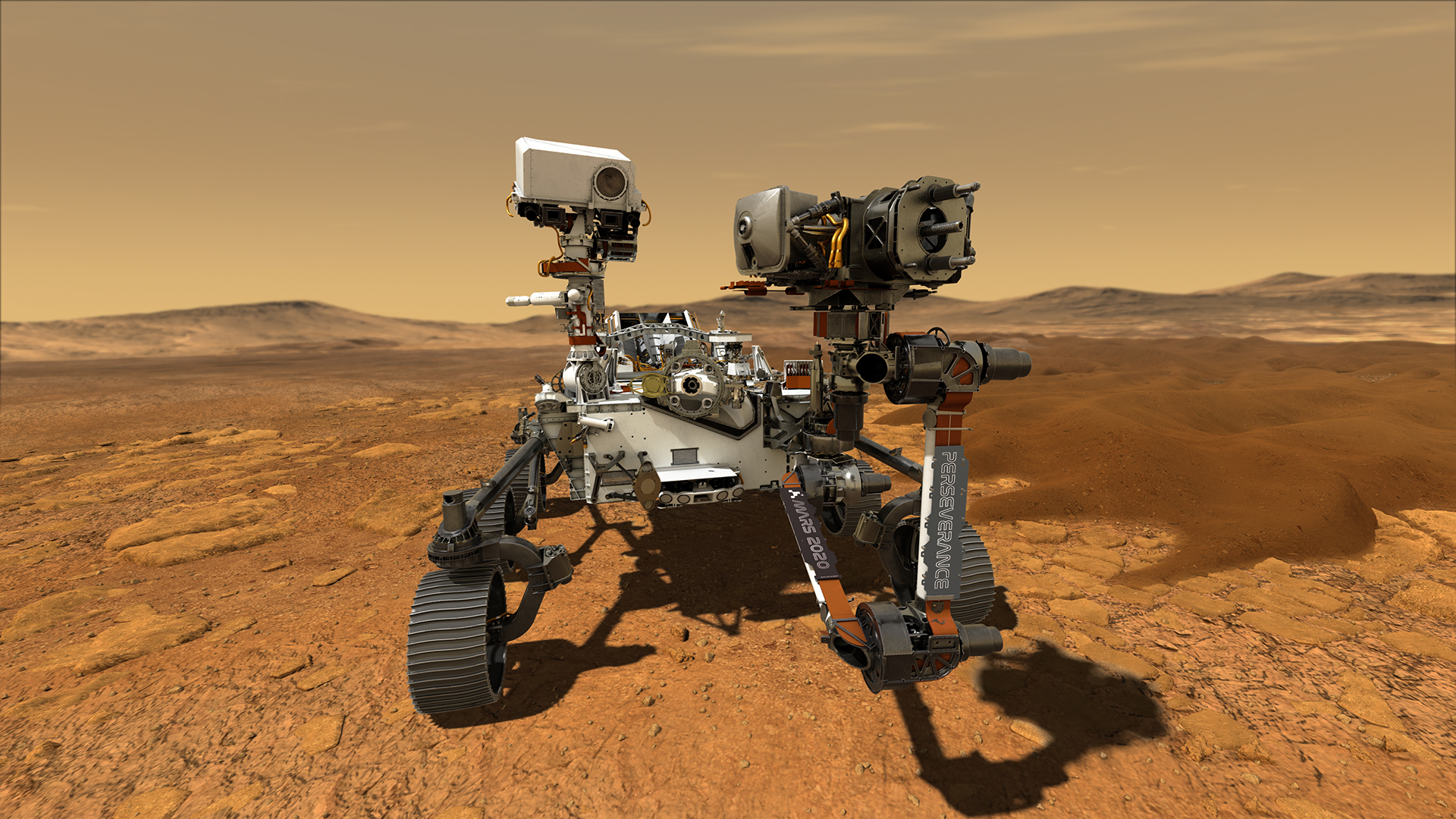NASA's next Mars rover has been cleared for liftoff.
This morning (July 27), the $2.7 billion Mars 2020 Perseverance rover passed its launch readiness review, the last big hurdle to clear before its planned liftoff Thursday (July 30) from Florida's Cape Canaveral Air Force Station.
"The launch readiness review is complete, and we are indeed go for launch," NASA Administrator Jim Bridenstine said during a news conference today.
Related: How to watch NASA's Mars 2020 Perseverance rover launch live online

Perseverance is scheduled to lift off atop a United Launch Alliance Atlas V rocket Thursday during a two-hour window that opens at 7:50 a.m. EDT (1150 GMT). You can watch all the action live here at Space.com, courtesy of NASA.
Mother Nature looks likely to cooperate with that plan. There's just a 20% chance that bad weather will scuttle Thursday's attempt, launch weather officer Jessica Williams, of the 45th Space Force, said during today's news conference.
The launch will send Perseverance on a nearly 7-month cruise to Mars, which will end with a dramatic, sky-crane landing within the Red Planet's Jezero Crater on Feb. 18, 2021.
Get the Space.com Newsletter
Breaking space news, the latest updates on rocket launches, skywatching events and more!
Related: NASA's Mars Perseverance rover mission to the Red Planet (photos)
The nuclear-powered rover will then spend at least one Mars year (nearly two Earth years) exploring the 28-mile-wide (45 kilometers) Jezero, which harbored a lake and a river delta in the ancient past. Perseverance will hunt for signs of ancient Mars life, study the crater's geology and collect and cache several dozen samples, among other tasks.
Those samples will be brought back to Earth, perhaps as early as 2031, by a joint NASA/European Space Agency campaign. Once the Mars material is here, scientists around the world will scour it for signs of life and clues about the planet's mysterious history.
"That'll be the first time in history that we've done a Mars return mission," Bridenstine said. "In fact, it's the first time in history we've done a return mission from any planet."
(Humanity has pulled off other types of sample-return missions, however. NASA's Apollo astronauts brought hundreds of pounds of rocks back from the moon, and robotic probes have returned to Earth with asteroid material and specks of comet dust.)
Perseverance will also demonstrate several new technologies on the Martian surface. For example, one of the rover's 10 instruments, called MOXIE, will generate oxygen from the Red Planet's thin, carbon dioxide-dominated atmosphere. Such gear, once scaled up, could help future astronauts explore the Red Planet, a goal NASA wants to achieve in the 2030s.
In addition, a 4-lb. (1.8 kilograms) helicopter called Ingenuity will travel to Mars on Perseverance's belly. Once the rover finds a good spot, the little chopper will detach and perform a few test flights — the first ever performed by a rotorcraft on an alien world.
If Ingenuity is successful, future Mars missions may routinely employ helicopters as scouts for rovers or astronauts, NASA officials have said. Rotorcraft could also do substantial science work of their own, exploring hard-to-reach places such as caves and cliff faces.
Ingenuity won't collect data in this manner; it carries no science instruments. But the little chopper does have a camera system, which should provide some amazing and unprecedented Red Planet views.
"Imagine looking from Perseverance out at a helicopter that is flying around Perseverance, and the helicopter is looking back at Perseverance, giving us images of Perseverance — what Perseverance is doing," Bridenstine said. "We're going to be able to see with our own eyes, with motion pictures, these kinds of activities happening on another world."
Perseverance's launch window extends through Aug. 15. If the rover is unable to get off the ground by then, it will have to be put into storage until the next opportunity in 2022. (Earth and Mars align properly for interplanetary missions for a few weeks every 26 months.)
The NASA rover's launch will be the third Mars liftoff in less than two weeks. The United Arab Emirates' Hope orbiter launched on July 19, and China's Tianwen-1 orbiter-lander-rover mission followed suit on July 23.
Mike Wall is the author of "Out There" (Grand Central Publishing, 2018; illustrated by Karl Tate), a book about the search for alien life. Follow him on Twitter @michaeldwall. Follow us on Twitter @Spacedotcom or Facebook.
Join our Space Forums to keep talking space on the latest missions, night sky and more! And if you have a news tip, correction or comment, let us know at: community@space.com.

Michael Wall is a Senior Space Writer with Space.com and joined the team in 2010. He primarily covers exoplanets, spaceflight and military space, but has been known to dabble in the space art beat. His book about the search for alien life, "Out There," was published on Nov. 13, 2018. Before becoming a science writer, Michael worked as a herpetologist and wildlife biologist. He has a Ph.D. in evolutionary biology from the University of Sydney, Australia, a bachelor's degree from the University of Arizona, and a graduate certificate in science writing from the University of California, Santa Cruz. To find out what his latest project is, you can follow Michael on Twitter.









